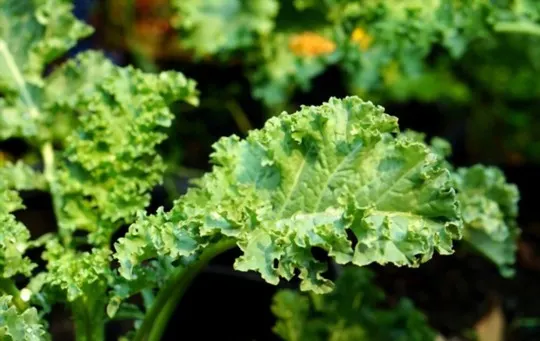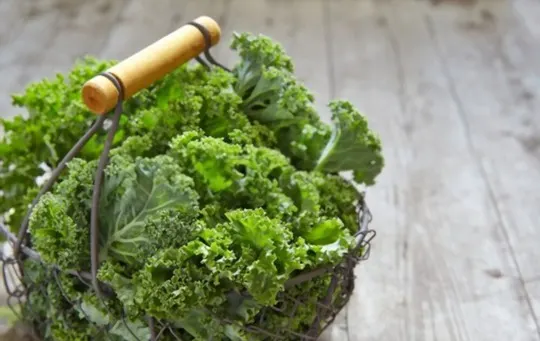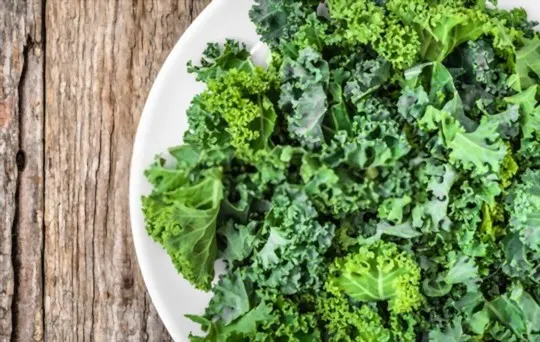If you have a health enthusiast friend or someone who’s into fitness, you might have heard the word “kale“ mentioned at least once by them.
That’s how prominent this green leafy vegetable is in the nutritious world.
Undoubtedly, it’s packed with nutrients, but what about its taste?
If you’re new to this leafy vegetable, you’re probably wondering about its taste profile which is only natural to get curious.
Fret not, as we reveal what does kale taste like.
This post will give a guide about its taste profile, types, and how to serve it.
What is Kale?

Kale belongs to Brassica oleracea, a plant species which is also home to cauliflower, cabbage, Brussels sprouts, and broccoli.
It’s often considered a superfood because of its high nutritional value.
It’s rich in fiber and low-fat content, making it an excellent ingredient for a healthy diet.
Kale has different varieties leading to variations in taste.
Brassica oleracea and Brassica napus are two kale varieties.
Based on the variety, there may be slight differences in appearance.
For instance, the Siberian and the Red Russian kale have frilled or curled leaves.
While Brassica oleracea varieties comprising Lacinto and Dinosaur kale have smooth leaves.
Regardless of the varieties, kale is a nutritious green leafy vegetable offering multiple health benefits, including improving your heart health, weight loss, protecting cells, and more.
It’s not surprising that kale is a popular ingredient in nutrient-based recipes, from salads to stir-frying.
What Does Kale Taste Like?

Unlike other greens, kale has tough leaves with a crunchy texture.
It may not be everyone’s favorite at first because of its bland taste and earthy flavor.
Young kale leaves are thinner and soft than older ones.
It may not be the best-tasting green on its own, but it tastes better with other ingredients.
The crunchy texture with a hint of bitterness blends well with other items or, in a way, enhances the overall recipe.
Kale leaves are not fresh like other green but are relatively dry and hard to chew if it’s too mature.
As we have mentioned earlier, there are varieties of kale, and the taste may vary slightly accordingly.
Let’s take a look into some of the types:
- Curly kale: Among different variants of kale, curly is the toughest one. It’s curly with a blue-green shade, which is easily recognizable. This one would be better to have as cooked or, if you’re making salads, chopped finely. .
- Red Russian kale: Red Russian kale is one of the well-known among the masses and tastes better when eaten young. The purple stems make it easy to recognize, even for beginners. Note that it turns dark when cooked, which is only natural.
- Tuscan kale: It’s also known as Dinosaur kale and is less bitter compared to other types. This one has a nutty flavor with the same hint of earthiness as other kale types. Tuscan kale will be a better introduction if you’re trying kale for the first time. .
How to Cook and Serve Kale?

There are various ways to cook kale resulting in different tastes and flavors.
Kale, when prepared with other ingredients, tastes better than eating alone.
One of the most common ways is in salads.
Unlike other greens, here you need to chop the kale leaves since it has a tough texture, especially for raw salads.
Besides salads, some ways to make kale are stir-frying, sauteing, and steaming.
We suggest adding lemon juice or balsamic vinegar to eliminate the bitterness if you’re cooking.
Here are some kale recipes you can give a try:
- Tortellini soup with sausage and kale.
- Sourdoughs buns with kale, cheese, and mushrooms.
- Steamed kale with lemon and garlic.
- Bacon hash, kale, and sweet potato with eggs.
Besides salads and other recipes, you may prepare kale juice too by adding other ingredients.
It’s healthy, and mixing it with other items helps remove the bitterness.
Give this nutritious and healthy green leafy vegetable a shot if you haven’t tried it yet.
The taste might not be pleasant if eaten alone, but combining it with other ingredients is incredible.
Before cooking, wash the leaves well to eliminate dirt and germs.
Since it has a tough texture, rub the kale leaves gently to make them softer.
Conclusion
Including kale in your meal routine would be excellent if you’re planning on it.
It’s nutritious and easy to prepare.
Additionally, varieties of kale are found in supermarkets or local grocery stores.
Older ones have a bitter taste with a more rigid texture, while younger ones are sweet and less bitter.
Considering these aspects will help in making a suitable recipe.
For instance, Tuscan kale is best for sauteing instead of salad because of its tough texture.
So, it would be better to choose other varieties of kale for salads instead.

What Does Kale Taste Like? Does it Taste Good?
Ingredients
- Kale
- Ingredients from your favorite recipes
Instructions
- Depending on the ingredients used, the cooking method, and the type of dish, the taste of the food can vary greatly.
- Make sure to select a recipe that will elevate the food’s original flavor, and enjoy experimenting with different recipes!

Andrew Gray is a seasoned food writer and blogger with a wealth of experience in the restaurant and catering industries. With a passion for all things delicious, Andrew has honed his culinary expertise through his work as a personal chef and caterer.
His love for food led him to venture into food writing, where he has contributed to various online publications, sharing his knowledge and insights on the culinary world. As the proud owner of AmericasRestaurant.com, Andrew covers a wide range of topics, including recipes, restaurant reviews, product recommendations, and culinary tips.
Through his website, he aims to inspire and educate fellow food enthusiasts, offering a comprehensive resource for all things food-related.

Leave a comment